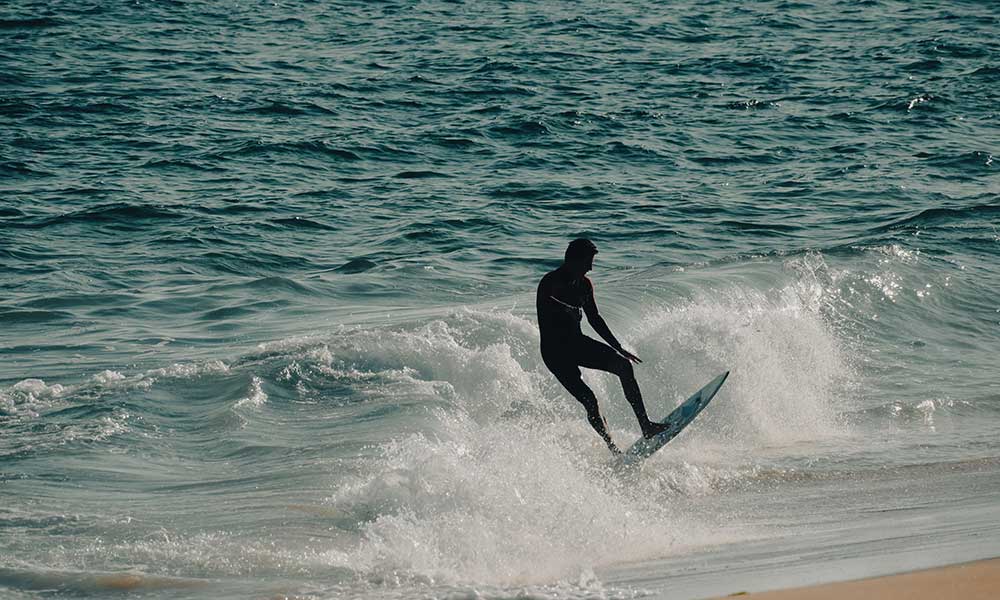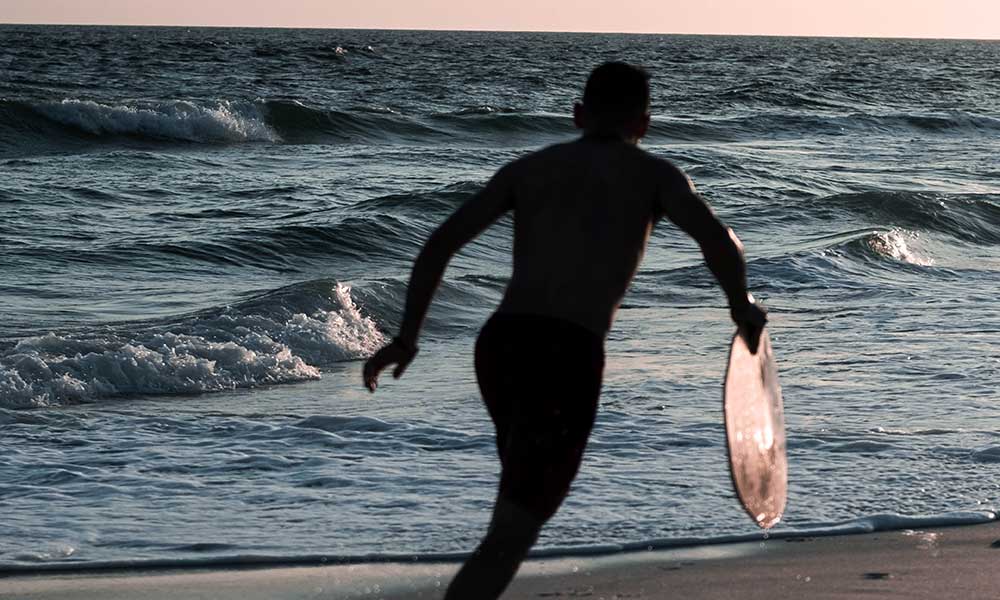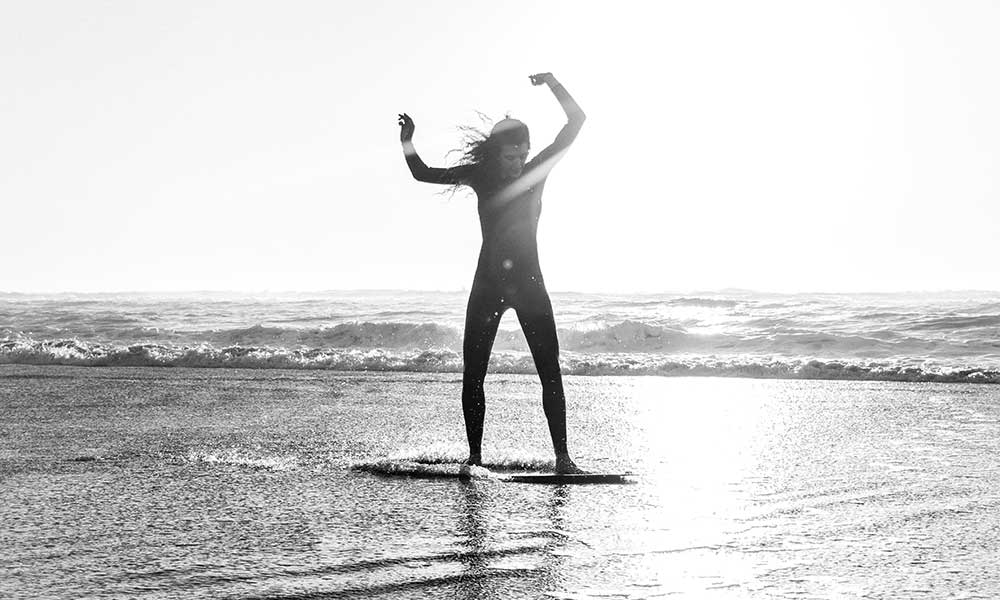You can buy skimboards from most surf shops these days and they are also sold by a number of online retailers, including Amazon.
But if you’re on a budget and have some free time on your hands, you can also make your own skimboard.
In the following guide, we’ll show you how to make a skimboard using basic materials.
Can You Make Your Own Skimboard?
Yes, definitely! If you follow the steps in this guide, it should be a relatively easy process, but you’ll still need to have some basic supplies/tools and DIY skills.
What Tools Do I Need?
The supplies you need will depend on the type of skimboard that you build. The following tools can be used to construct wooden skimboards, and with a few simple additions, you can also use them to make other types of skimboards:
- 2 1/4 inch Plywood Boards
- Wood Glue
- Paint Spreader
- Polyurethane
- Sandpaper of Varying Grits
- A Dozen Clamps
- Duct Tape/Masking Tape
- A Jigsaw
- Paint
- Safety Googles
- Face Mask
How To Make A Wooden Skimboard
Wooden skimboards are best for flatland skimming. They were the first skimboards used during the early days of this sport and they remain the most popular and effective.
They are also the easiest to create, as you can build a simple plywood board cheaply, quickly, and with minimal experience.
Here’s what you need to do:
Step One: Glue the Boards
The first thing you must do is prepare the materials mentioned above. Once you have the right boards, you’re ready to put them together.
Simply spread the glue evenly onto one plywood board using the paint spreader and then place the other plywood board on top.
Use the clamps to lock the boards together. You may need about 10 or 12 clamps to secure all around the board. If you have fewer clamps, just spread them evenly around.
Keep the boards suspended and place a heavy weight in the middle. It should be enough to create a slight concave, which is important in a good skimboard. Don’t overdo it, though.
Once the boards are in place, give them at least 24 hours to dry. Ensure they are completely dry before moving on to the next step.
Step Two: Measure and Cut the Shape of the Skimboard
Draw the desired shape into the wood. The size is down to your personal preference, but most skimboards are between 45 and 57 inches long and 17.75 and 23 inches wide.
If you’re not sure of the exact measurements, check online for the best-selling skimboards, find one that is suitable for your skill level and size, and check the measurements and shape. You can then simply replicate the design in your own skimboard.
Once you have drawn the lines, cut them out with a jigsaw.
Step Three: Sand the Board
After cutting the board, grab some sandpaper and smooth the edges down. Use a 40 grit to begin with and work your up before doing the same on the front and back. Keep sanding until you have a smooth board ready for some finishing touches.
Step Four: Finish the Bottom of the Board
Add polyurethane to the bottom of the board. You’ll need a few clean coats as it’s going to take a beating when rubbing against sand day-in-day-out. Let it dry completely before applying additional layers or moving on to the next step.
Step Five: Paint and Finish the Top of the Board
Create/buy a stencil or use some masking tape/duct tape to create a design on the top of the skimboard. Once you have the desired pattern, cover it with spray paint.
After painting, apply a coat of polyurethane to the top of the skimboard. It doesn’t need to be as thick as the bottom as it won’t be subject to as much wear and tear.
Step Six: Wax the Top
A coating of surf wax on the top of the skimboard will ensure that your feet have something to grip on to.
You’re now ready to take your skimboard out for a test drive!
Are Wood Skimboards Good?
Wooden skimboards are perfect for flatland skimming. They are solid and durable and can be used in a variety of different conditions. You can also make them from many different types of wood. The methods above outline how to make a skimboard from regular plywood as it’s cheap and widely available, but if you want to get more creative, check out some other types of wood.
Just remember that you’re not building a dining table. It’s not just about finding the best-looking or most expensive wood. You want something that is lightweight, durable, and strong.
How To Make A Fiberglass Skimboard
Building a fiberglass skimboard is not as straightforward as building a wooden skimboard. If you’re determined, though, and you have the patience, skills, and tools, you can build a fiberglass board using the following steps.
Step One: Prep the Materials
To build a fiberglass skimboard, you will need the following materials:
- An XPS Foam Core
- Epoxy Resin
- 4 Layers of 4z Fiberglass Cloth
- A Face Mask
- A Heat Gun
Step Two: Cut the Foam
Create a stencil to cut the foam into shape. You can use the same process as described above, or you can opt for something more precise by printing a stencil.
Step Three: Sand the Foam
Use fine sandpaper to smooth the rails of your newly-cut skimboard. You want to remove as little of the foam as possible and create a beveled finish.
Wear a face mask for this process to ensure you don’t inhale any of the foam dust particles. You will also need to wear a mask when working with fiberglass.
Step Four: Create the Rocker
Add weight to the lower portion of the board so that it bends slightly. This is a tricky part of the process, but the goal is to create a slight bend that actually holds. A heat gun can help, but you’ll have to be very careful to avoid melting or burning the foam.
Step Five: Prepare for Fiberglassing
Place the skimboard on a table or trestle to prepare it for fiberglassing. Attach the board to the base using masking tape and then run a line of tape around the rails, preventing the resin from dripping over.
Step Six: Layer the Fiberglass
Place the layers of fiberglass over the skimboard and cut them to shape, leaving 1 inch of cloth around the edges. This is a delicate process, so take your time and be careful.
Step Seven: Add the Epoxy Resin
Epoxy resin is needed to harden the fiberglass and create a tough shell. Follow the instructions to mix the resin and then carefully pour it over the skimboard before spreading it out.
Apply an even coat and cover every inch of the skimboard, letting it drip over the edges to cover the overhanging cloth.
Step Eight: Remove Epoxy Bubbles
Use your heat gun to remove bubbles from the epoxy resin.
Let the epoxy cure for a couple of hours.
Step Nine: Remove the Edges and Trim
Remove the excess overhanging layer of fiberglass with a knife. Cut above the masking tape and remove both the excess layer and the tape.
Wait for your board to dry and cure overnight.
Step Ten: Flip and Repeat
Once the layer of epoxy is dry and hard, flip your skimboard around and repeat the fiberglassing process on the other side.
Make sure the fiberglass/resin are overlapping again so that the whole skimboard is bonded.
Final Steps: Finish and Polish
You can finish by “glassing” the skimboard, which is when you add a couple of layers of epoxy on the top and bottom. If you want to add some color, use epoxy dye in the mix.
After finishing the final coats and making sure they are dry, use fine grit sandpaper to polish the skimboard but make sure you don’t overdo it.
If desired, finish up with a polishing kit and add some traction pads.
Foam Vs. Wood Skimboards: What’s The Difference?
The main difference between foam skimboards and wooden skimboards is that the former is used for wave skimming and the latter is best reserved for sand skimming, also known as flatland skimming.
A wooden skimboard is durable enough to withstand the beating that a skimboard takes when skimming over wet sand. A foam skimboard is lighter and better suited for the water.







